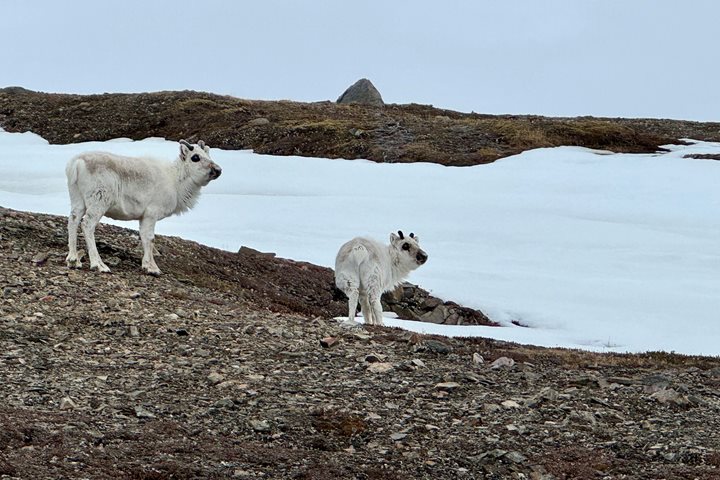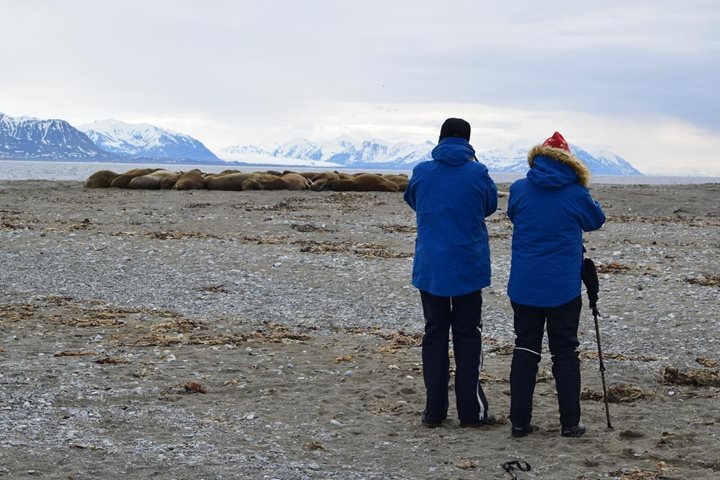Our third full day exploring the magnificent and remote archipelago of Svalbard started in a great way; after enjoying breakfast on board, we geared up and boarded Zodiacs to go hiking at Ingeborgfjellet. Located on the northern side near the entrance of the very large Bellsund fjord, Ingeborgfjellet is well known for harboring one of the largest nesting colonies of dovekies in Svalbard. We divided into groups. The long hikers went first, followed by groups of medium, leisurely, and photo hikers. Our landing was witnessed but pretty much ignored by a herd of reindeer that couldn’t have cared less about us. Occasionally, a polar bear may kill a reindeer, and the Svalbard governor allowed a reindeer hunting quota for residents starting a few years ago, but reindeers have no natural predators in the archipelago. They have been protected by law for several decades now and are placid creatures that kept busy grazing while we took their pictures and learned about their tough lives and amazing adaptations. Endemic to Svalbard, reindeer here are the shortest of all the caribou/reindeer subspecies. They are extremely well adapted to the very low winter temperatures, the only ungulates with a hair-covered muzzle.
Eventually, we approached the base of the rocky slopes and had great views of the dovekie colony. Huge flocks of the tiny seabirds flew around the site, filling the air with their twittering call; their fast wingbeats and their noisy calls reminded me of the more tropical latitudes where parrots live. Dovekies, also known as little auks, are the most northerly member of the puffin family. In my opinion, they are one of the most beautiful of the auks.
After a delicious lunch and a short positioning to the southern shore of Bellsund, we went ashore again for some more hikes during the afternoon, this time at a very interesting place called Ahlstrandhalvøya. Numerous beluga whales were slaughtered here for their meat and blubber during the 1920s and 1930s, and we observed a lot of evidence of this. Huge mounds of beluga skulls and other bones piled along the beach were particularly conspicuous. This was an interesting chapter of the archipelago’s cultural history; fortunately, it stopped a long time ago. Back on board, the bridge made an announcement over the PA system shortly before our daily recap started. It brought everyone to their feet to watch a group of belugas swimming alongside National Geographic Endurance. What a great way to finish another wonderful day exploring the High Arctic!







